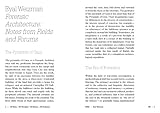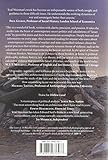Part 1: Hannibal Directive
On July 2, 2015, architect and intellectual Eyal Weizman gave a lecture at the Médecins Sans Frontières headquarters in Paris in which he presented the latest research of Forensic Architecture. Since 2012, this think tank, founded and directed by Weizman at Goldsmiths University of London, has investigated several dozen geopolitical events for which the "testimony" of architecture and/or objects was interpreted in order to be presented as evidence for prosecution of state responsibility in these events. A few of these cases investigate Israeli and U.S. drone strikes, respectively in Gaza and Pakistan. One involves the deliberate lack of assistance given to a drifting migrant boat in the Mediterranean Sea. Yet another focuses on a former concentration camp buried in former Yugoslavia.
The organization's most recent research consists of the reconstruction of events in Gaza that immediately followed the capture of an Israeli soldier on August 1, 2014, during the so-called “Operation Protective Edge” (which killed 2,220 Palestinians, including 1,492 civilians, and displaced more than 500,000 others in July and August 2014). The comprehensive and meticulously documented report covering a single day in the conflict has now been released in the form of a collaborative online publication by Forensic Architecture and Amnesty International under the name “Black Friday.”
Click here to read Full Report
The captured Israeli soldier, Lieutenant Hadar Goldin, was part of a group of soldiers deployed in Rafah that engaged in a firefight with a group of Hamas fighters. Goldin was abducted during the fighting. As the report explains, the memory of the 2011 asymmetrical deal brokered between Hamas and the Israeli government to free French-Israeli prisoner and IDF soldier Gilad Shalit - captured in June 2006 and exchanged for 1,027 Palestinian prisoners – seems to have weighed heavily in the Israeli High Command’s subsequent decision on the heels of Goldin's capture: A secret order conceived to be used in case of the kidnapping of a soldier, known since 1982 as the “Hannibal Directive,” was subsequently issued to Israeli troops.
According to the report, the directive states the following: “The kidnapping must be stopped by all means even at the price of hitting and harming our own forces.” The subtext is almost explicit here: the Israeli army reserves the right to kill its own soldier to avoid his or her capture. As Weizman pointed out in his lecture, this triggers a rather paradoxical situation in which Hamas fighters are trying to protect the Israeli soldier while the Israeli army engages “all means” to kill him. The heavy Israeli Airforce bombardment of Gaza that followed Goldin's abduction – about 2,000 bombs and shells – killed between 135 to 200 Palestinians.
Thanks to skills usually belonging to the realm of civil architecture and filmmaking, Forensic Architecture was able to coordinate, both spatially and temporally, numerous photographs and films shot from the ground in Rafah. In doing so, not only did the team manage to reconstitute the terror experienced by the Palestinians living in the vicinity of the bombings, but it was also able to produce a certain amount of evidence backing the narrative of the Israeli army attempting to kill its own soldier rather than see him abducted. Understanding the bombardments’ precise location and time, and cross-referencing these with with the excavation of Hamas tunnels later undertaken by the Israeli Army and the time of the kidnapping, allowed Forensic Architecture to assert that the bombings’ target was the likely the subterranean paths used by the escaping Hamas fighters and their prisoner. The evidence contradicts assertions made by the Israeli High Command in a report attesting to the immediate death of its soldier - right after he was abducted - as Weizman explains. The report was based on a dubious analysis of Goldin’s blood, which was found on his jacket in one of the discovered tunnels. In this light, the zeal of the Israeli army to declare its soldier’s early death can be seen as an attempt to discredit any claim that it attempted to kill him.
The Forensic Architecture/Amnesty International report is brilliant in its thoroughness, as well as in the means it employed to produce its evidence, especially since the think tank is mostly comprised of architects, filmmakers, photographers and artists, not lawyers. Having roughly introduced the report's findings, I recommend its complete reading and would now like to attempt an analysis of what I perceive as the core of the problem revealed by the dreadful application of the “Hannibal Directive”: something I will call the “economy of lives.”
Part 2: Economy of Lives
The Hannibal Directive exists because of the historical asymmetrical characteristics of prisoner exchanges between the Israeli government and Palestinian and Lebanese political groups like Hamas and Hezbollah. The armed sections of these groups evidently rely on this precise asymmetrical relationship and undertake kidnappings of one or multiple Israeli soldiers when possible to negotiate the liberation of several Palestinians held in Israeli prisons. However, the economy of lives that can be perceived through this asymmetry is profoundly disturbing. The hidden message in the enunciation of the 2011 Shalit exchange is the following: One Israeli life is worth 1,027 Palestinian lives. The very fact that many of us know Shalit’s name, but not one of the 1,027 liberated Palestinian prisoners’, is symptomatic. In the case of “Black Friday,” this economy of lives exposes its violence through even more extreme and perverse forms: for the Israeli army, 135 to 200 Palestinian lives are worth ending in order to end an Israeli one, so to avoid freeing Palestinian prisoners.
We should not think of the concept of economy of lives as a retrospective reading of the Israeli Army’s crimes: This logic is at work in most Western military decision making, as Weizman shows in his book The Least of All Possible Evils (Verso 2011) through interviews with Human Rights Watch consultant Marc Garlasco, a former Pentagon "chief of high-value targeting" during the first years of the 2003 US war in Iraq. For each airstrike against an Iraqi political or military figure that Garlasco designed, he had to follow a “correct balance of civilian casualties in relation to the military value of a mission. ” In other words, there is a number of civilians the US army allows itself to kill as "collateral damage" when targeting a strategic assassination. In Iraq, this number was 30, Garlasco reveals. “In this system of calculation,” writes Weizman, “twenty-nine deaths designates a threshold. Above it, in the eyes of the US military lawyers, is potentially ‘unlawful killing’; below it, ‘necessary sacrifice.’" Here, again, lives are disincarnated into statistics calculated in relation to military and ideological objectives.
In the case of the Israeli-Palestinian exchange of prisoners that motivated this reflection, it might first appear that the asymmetry of a deal like the one reached to release Shalit constitutes a rare inversion of the asymmetry of power manufactured by the Apartheid and continuous occupation (in the West Bank) and siege (in Gaza) that Palestinians have to suffer on a daily basis. On the contrary, I believe that it is the same asymmetry at work: the conception of an economy of lives in which some are worth less than others. This is the very foundation of racism, and not "simply" in Palestine, as we are reminded daily.
On April 24, 2015, Senegalese novelist Fatou Diome, who was invited to speak on French television to give her insights about the hundreds of migrant deaths in the middle of the Mediterranean Sea, let out a tragic scream: “If the people who die were White, the entire Earth would tremble!” A few days before this poignant declaration, the black life of Freddie Gray, ended by the Baltimore Police on April 12th, had been put in a balance in which the destruction of a few storefronts appeared to weigh more. The discursive opposition of a “broken spine” (in reference to Gray’s murder by the police) and “broken windows” (in reference to the destructive reaction by some members of Baltimore’s African American community) illustrated well the economy at stake here. On April 27th, a state of emergency was declared on Baltimore, thus implementing a curfew from 10pm to 5am that lasted nine days. The State of Exception however, does not correspond to this spectacular temporary suspension of rights as much as it characterizes the normalized territorialization of sub-citizenry – whether explicit like in Palestine, or implicit like in many American and European cities – attributed to marked bodies. The political movement Black Lives Matter was created in the form of a scream against this sub-citizen status and the low value of Black lives implied in confrontations with police officers.
In January 2015, French Prime Minister Manuel Valls described the situation of France’s banlieues (suburbs) as “a territorial, social, ethnic apartheid.” Although this term is inappropriate in this case, insofar as it tends to normalize political struggles in South Africa and Palestine, we can only acknowledge the gravity of the situation of these peripheral neighborhoods that host an important part of the French Arab and Black population. Like for Baltimore in 2015, a state of emergency was declared in November 2005 in some of the suburbs after several cars and buildings were burnt following the violent deaths of two teenagers, Bouna Traoré and Zyed Benna, electrocuted when being illegitimately chased by the police on October 25, 2005. Here, again, the economy of lives and things had attributed more value to things and Police lives than in Brown and Black lives.
Conclusion
This article does not seek comparison where it should not exist: the bombardments on Gaza, as well as the continuous incarceration of its 1.8 million inhabitants, most of which are refugees of an almost seventy year old ethnic cleansing, cannot be compared in essence with the current situation of Brown and Black lives in North America and Europe, however precarious these are, and despite the history of colonialism and slavery that this situation is founded on. What is common in these two cases are the profoundly racist structures that establish, with various degrees of explicitness, situations in which some lives are worth less than others.
The conclusions of the “Black Friday” report enjoin the Israeli army to reform its system of investigation, as well as recommend that foreign governments start criminal investigations into the perpetuators responsible for the hundreds of Palestinian civilian deaths. These types of conclusions are appropriate to Amnesty International’s geopolitical ambitions and should be welcomed as such. However, as the members of Forensic Architecture know well, the trial and sometimes condemnation of individuals for crimes that occur through systemic logic such as an imbalanced economy of lives do not make this logic more fragile – sometimes, it even makes it stronger in the claim that a system can make regarding healthy self-regulation. What is at stake in Palestine and elsewhere is the balancing of the economy of lives at both a legal and imaginary level. Only this agenda, expressed in the most literal manner in the name of the Black Lives Matter movement, can veritably challenge the structure of racism and its dreadful effects.
Léopold Lambert is a Paris-based architect and writer/editor of The Funambulist and its podcast, Archipelago. He is the author of Weaponized Architecture: The Impossibility of Innocence (dpr-barcelona, 2012), Topie Impitoyable: The Corporeal Politics of the Cloth, the Wall, and the Street (punctum, forthcoming 2015) and Politique du Bulldozer (B2, forthcoming 2015). In September 2015, he will also launch the first issue of The Funambulist magazine. leopoldlambert.net / thefunambulist.net / the-archipelago.net



